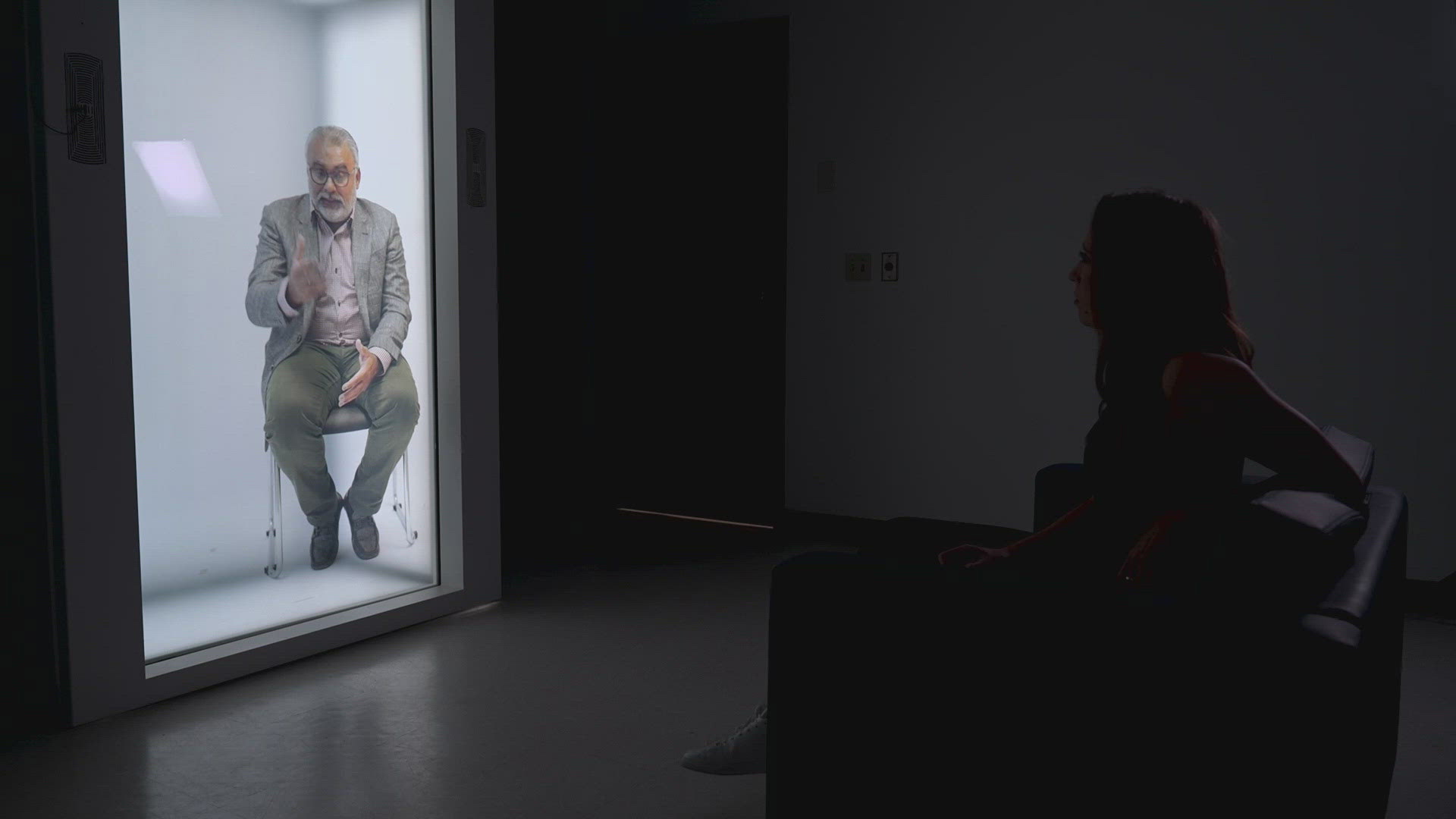LANCASTER, Texas — When you step inside Crescent Regional Hospital in Lancaster, it looks like any other hospital across the country, but when you look closer, you'll learn there's one thing inside this regional hospital that sets it apart.
Crescent Regional has installed its first "Holobox," a 3D, life-sized, highly advanced holographic display that allows doctors to teleport to the hospital for real-time, holographic consults with patients.
The Holobox, designed by a Netherlands-based company called Holoconnects, is 86" tall. The hospital plans to install 24" mini holobox displays in several more locations throughout its hospital and associated clinics.
Crescent’s CEO Raji Kumar told WFAA her hospital is the first in the nation to ever use this technology.
"There’s so much artificial intelligence, robotic technology, so many things," she explained. "So, I'm super excited of being able to bring some of this technology to North Texas."
The holobox, Kumar said, will be used in several ways. Right now, it's helping doctors cut back on travel time. The hospital has a clinic about 45 minutes away in Farmers Branch.
Instead of driving back to the hospital for a simple pre-op, post-op or follow up appointment, doctors can now teleport to the hospital from the clinic to meet with a patient.
"Our doctors on the north side of town don’t have to drive 30 miles to see one of their patients," Kumar explained. "They can just hop into the studio have the consult."
The studio at the clinic features a fairly simply set up; there's a monitor, microphone, and camera. That's all it takes to get a doctor to teleport to the hospital.
"This is what we are using it for now," Kumar explained.
Kumar said she plans to put more “studios" in doctors’ offices and homes and more holoboxes in her hospital, so doctors can teleport directly into patient and emergency rooms.
"When I see the patient live there in the emergency room, that will give me more sense of what’s going on over there," Cardiologist Dr. Saad Hussain told WFAA in an interview via the holobox.
In an interview via the Holobox, Dr. Hussain said a hologram is as close to 'in person' as it gets--much more personal than a call or zoom.
"It’s like a 3D image and [the] patient is seeing you, and it looks more like closer to reality. Then, definitely patients get more comfortable."
Kumar told WFAA this is just the beginning. Her hope is to have holoboxes available in rural hospitals to connect patients with specialists from all over.
"I plan to give it as a service to rural hospitals," she explained. "To say, 'hey, I've got all the specialists on board. I will give you the box, I'll take care of the camera setups for my specialists."
"I'm actually trying to do a mini box in a mobile van, so I could take it to underserved areas, okay, where there's no specialist help."

